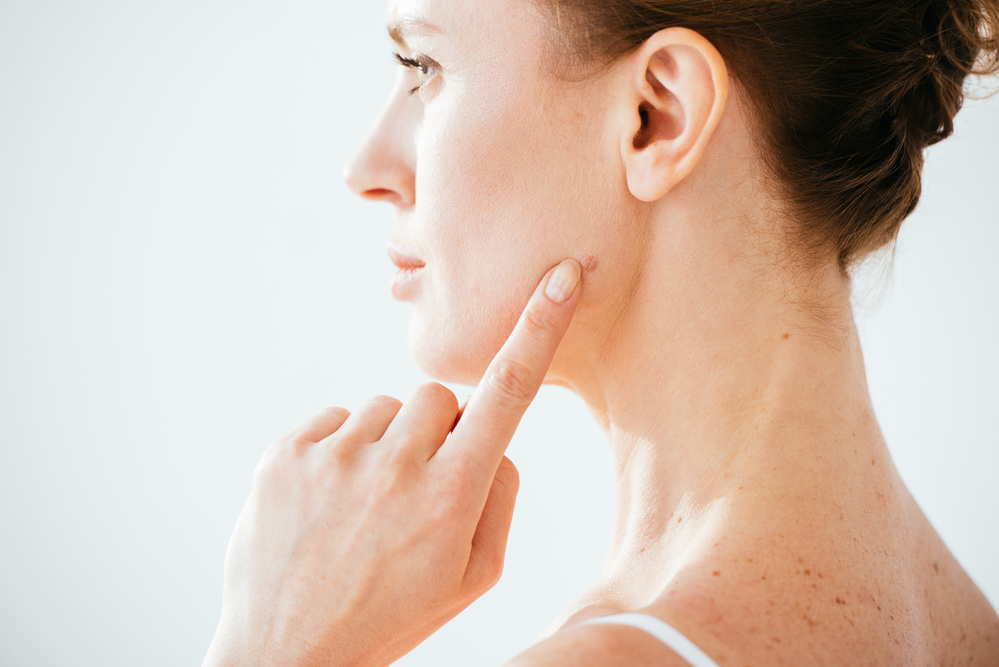At Westover Hills Dermatology in San Antonio, TX, we believe everyone should be comfortable in their skin. We understand that moles can make people feel uncomfortable by affecting their self-confidence or chafing painfully against clothing. That’s why we’re proud to offer two safe, effective mole removal methods; surgical excision, and a surgical shave. Keep reading to learn more about the process of removing a mole, including how long it takes.
How Long Does Mole Removal Take?
How long mole removal takes depends on several factors, including how large and deep the mole is. Generally, regardless of whether a surgical incision or shave is appropriate for you, the process is completed in under an hour. Typically, the removal process itself takes fewer than 10 minutes. However, the entire appointment takes longer than that because we administer a local anesthetic to numb the treatment area, and it doesn’t take effect right away.
How Should I Prepare for My Removal?
To prepare for your mole removal, you should come in with clean skin. If the targeted mole is on your face or neck, we will need to remove any makeup or other cosmetics you choose to wear prior to the removal of your mole. If your mole is in an easily noticeable place, you may want to schedule a day or two off from work. In the early stage of the healing process, you will need to wear a bandage to cover the wound where the mole was.
What Can I Expect After the Mole Is Removed?
Regardless of whether surgical excision or a surgical shave is right for you, the removal of unwanted moles is an outpatient procedure. Since there is no sedation or general anesthesia involved, you are free to drive yourself back to work once your mole is removed. Depending on the size of the mole that was removed and how healthy you are overall, your recovery time may take anywhere from two to three weeks.
While you can resume work and other responsibilities, you will need to make sure you stay on top of another responsibility; following all of your aftercare instructions. Make sure you keep the wound moist, clean, and covered. The dressing covering the wound to keep it clean as it heals must be changed daily. Also, once your wound has healed, you will need to apply sunscreen to the removal site diligently when the area is exposed to sunlight.
Do I Need To Have My Mole Removed?
If your mole is in an area that does not cause you pain or discomfort, you may not need to have it removed. However, you should strongly consider having atypical moles removed regardless of how they make you feel. Even though normal moles are benign, there is a chance that your atypical mole is malignant. As a good rule of thumb, the ABCDEs of atypical moles are useful for identification. Here is what the acronym stands for:
- Asymmetrical
- Borders
- Colors
- Diameter
- Evolution
You should schedule a dermatology appointment as soon as possible if your mole is asymmetrical. Normal moles are symmetrical. Also, normal moles have regular borders. If your mole has an irregular border, it is atypical and may be malignant. You should also schedule an appointment right away if the mole is unusually dark or made up of several colors. Moreover, an immediate appointment is necessary if it is over 6 mm in diameter, evolving, or bleeding.
Can an Atypical Mole Turn Into Melanoma?
Yes, an atypical mole can turn into melanoma, otherwise referred to as a black tumor. However, you should know that seven out of 10 times, melanomas grow out of the normal melanocytes in your skin. It is only in 30% of cases that melanomas grow out of the melanocytes in your moles. Therefore, you should strongly consider having your skin tested for cancer regularly. Especially in the earliest stages of the disease, you may not spot the warning signs.
What Are the Risk Factors of Melanoma?
Even though anyone can develop melanoma, some people’s risk of developing this disease is higher than the risk other people face. People with fair skin, blue eyes, blond or red hair, or freckles are more likely to develop this disease than people with dark skin, brown hair, or brown eyes for example. As another example, people with immune system disorders are more likely than people suffering from no immune system disorder to develop melanoma.
Other significant risk factors for developing melanoma include a history of blistering sunburns and a history of tanning bed use. Sunburns that are so severe they cause your skin to blister will expose your skin to a significant amount of ultraviolet light. Ultraviolet light exposure, be it from solar rays, tanning beds, or another source, can change your DNA and its growth mechanisms.
The Bottom Line
Mole removal times vary on a case-by-case basis. However, you shouldn’t expect the process to take longer than an hour. If you are interested in having a mole removed, we can help. Contact us today at Westover Hills Dermatology in San Antonio, TX to schedule your initial consultation and find out which removal method is the best fit for you.

